Forward genetics uncovers Transmembrane protein 107 as a novel factor required for ciliogenesis and Sonic hedgehog signaling
- PMID: 22698544
- PMCID: PMC3402655
- DOI: 10.1016/j.ydbio.2012.06.008
Forward genetics uncovers Transmembrane protein 107 as a novel factor required for ciliogenesis and Sonic hedgehog signaling
Abstract
Cilia are dynamic organelles that are essential for a vast array of developmental patterning events, including left-right specification, skeletal formation, neural development, and organogenesis. Despite recent advances in understanding cilia form and function, many key ciliogenesis components have yet to be identified. By using a forward genetics approach, we isolated a novel mutant allele (schlei) of the mouse Transmembrane protein 107 (Tmem107) gene, which we show here is critical for cilia formation and embryonic patterning. Tmem107 is required for normal Sonic hedgehog (Shh) signaling in the neural tube and acts in combination with Gli2 and Gli3 to pattern ventral and intermediate neuronal cell types. schlei mutants also form extra digits, and we demonstrate that Tmem107 acts in the Shh pathway to determine digit number, but not identity, by regulating a subset of Shh target genes. Phenotypically, schlei mutants share several features with other cilia mutants; however, spatial restriction of mutant phenotypes and lack of left-right patterning defects in schlei animals suggest differential requirements for Tmem107 in cilia formation in distinct tissues. Also, in contrast to mutants with complete loss of cilia, schlei mutants retain some function of both Gli activator and repressor forms. Together, these studies identify a previously unknown regulator of ciliogenesis and provide insight into how ciliary factors affect Shh signaling and cilia biogenesis in distinct tissues.
Copyright © 2012 Elsevier Inc. All rights reserved.
Figures


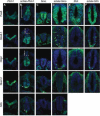
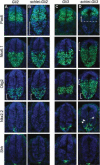
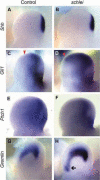
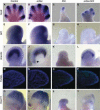
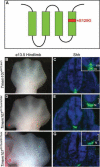

Similar articles
-
Intraflagellar transport protein 122 antagonizes Sonic Hedgehog signaling and controls ciliary localization of pathway components.Proc Natl Acad Sci U S A. 2011 Jan 25;108(4):1456-61. doi: 10.1073/pnas.1011410108. Epub 2011 Jan 5. Proc Natl Acad Sci U S A. 2011. PMID: 21209331 Free PMC article.
-
Protein kinase A acts at the basal body of the primary cilium to prevent Gli2 activation and ventralization of the mouse neural tube.Development. 2011 Nov;138(22):4921-30. doi: 10.1242/dev.070805. Epub 2011 Oct 17. Development. 2011. PMID: 22007132 Free PMC article.
-
Three Tctn proteins are functionally conserved in the regulation of neural tube patterning and Gli3 processing but not ciliogenesis and Hedgehog signaling in the mouse.Dev Biol. 2017 Oct 1;430(1):156-165. doi: 10.1016/j.ydbio.2017.08.003. Epub 2017 Aug 8. Dev Biol. 2017. PMID: 28800946 Free PMC article.
-
Cilia, ciliopathies and hedgehog-related forebrain developmental disorders.Neurobiol Dis. 2021 Mar;150:105236. doi: 10.1016/j.nbd.2020.105236. Epub 2020 Dec 28. Neurobiol Dis. 2021. PMID: 33383187 Review.
-
The relationship between sonic Hedgehog signaling, cilia, and neural tube defects.Birth Defects Res A Clin Mol Teratol. 2010 Aug;88(8):633-52. doi: 10.1002/bdra.20686. Birth Defects Res A Clin Mol Teratol. 2010. PMID: 20544799 Free PMC article. Review.
Cited by
-
Mutations in SCNM1 cause orofaciodigital syndrome due to minor intron splicing defects affecting primary cilia.Am J Hum Genet. 2022 Oct 6;109(10):1828-1849. doi: 10.1016/j.ajhg.2022.08.009. Epub 2022 Sep 8. Am J Hum Genet. 2022. PMID: 36084634 Free PMC article.
-
Cell cycle-related kinase regulates mammalian eye development through positive and negative regulation of the Hedgehog pathway.Dev Biol. 2018 Feb 1;434(1):24-35. doi: 10.1016/j.ydbio.2017.10.022. Epub 2017 Nov 21. Dev Biol. 2018. PMID: 29166577 Free PMC article.
-
ChOP-CT: quantitative morphometrical analysis of the Hindbrain Choroid Plexus by X-ray micro-computed tomography.Fluids Barriers CNS. 2024 Jan 24;21(1):9. doi: 10.1186/s12987-023-00502-8. Fluids Barriers CNS. 2024. PMID: 38268040 Free PMC article.
-
Smoothened and ARL13B are critical in mouse for superior cerebellar peduncle targeting.Genetics. 2021 Aug 9;218(4):iyab084. doi: 10.1093/genetics/iyab084. Genetics. 2021. PMID: 34132778 Free PMC article.
-
Cyclin-dependent kinase 9 links RNA polymerase II transcription to processing of ribosomal RNA.J Biol Chem. 2013 Jul 19;288(29):21173-21183. doi: 10.1074/jbc.M113.483719. Epub 2013 Jun 6. J Biol Chem. 2013. PMID: 23744076 Free PMC article.
References
-
- Ansley SJ, Badano JL, Blacque OE, Hill J, Hoskins BE, Leitch CC, Kim JC, Ross AJ, Eichers ER, Teslovich TM, et al. Basal body dysfunction is a likely cause of pleiotropic Bardet-Biedl syndrome. Nature. 2003;425(6958):628–33. - PubMed
-
- Avidor-Reiss T, Maer AM, Koundakjian E, Polyanovsky A, Keil T, Subramaniam S, Zuker CS. Decoding cilia function: defining specialized genes required for compartmentalized cilia biogenesis. Cell. 2004;117(4):527–39. - PubMed
-
- Bai CB, Auerbach W, Lee JS, Stephen D, Joyner AL. Gli2, but not Gli1, is required for initial Shh signaling and ectopic activation of the Shh pathway. Development. 2002;129(20):4753–61. - PubMed
-
- Bai CB, Joyner AL. Gli1 can rescue the in vivo function of Gli2. Development. 2001;128(24):5161–72. - PubMed
MeSH terms
Substances
Grants and funding
LinkOut - more resources
Full Text Sources
Molecular Biology Databases

